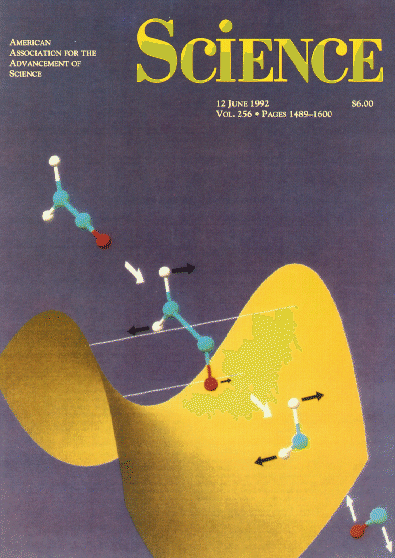
Results of an experiment led by Bradley Moore, a chemist with LBL's Chemical Sciences Division and a professor of chemistry at UC Berkeley, will help chemists in their on-going effort to understand, predict, and, ultimately, control chemical reaction rates and products.
It is no exaggeration to say that a society's standard of living is largely dependent upon its knowledge of chemical reactions. For more than 50 years, much of our knowledge of chemical reactions has been derived from transition state theory, which explains how the movement of atoms in a molecule during a reaction determines the reaction's outcome. However, few of the theory's predictions have been experimentally tested because, until recently, chemists lacked the tools to do so.
Using a technique called photofragment spectroscopy, Moore and his research team were able to make the first direct observations of transition state quantum energy levels in a unimolecular reaction -- one involving only one molecule as the reactant -- and deduce the associated molecular motions. In accomplishing this, they were able to confirm that the rate of a reaction is proportional to the number of different ways a molecule can vibrate at the transition state.
The tests were conducted on ketene (CH2CO), a reactive gas that absorbs energy from ultraviolet photons and separates into CH2 and CO. A sample of ketene molecules was chilled to nearly absolute zero in order to ensure that all of the molecules started out at the same energy. Ultraviolet laser light was then flashed on the molecules to cause the reaction breaking the C-C bond and separating the CH2 and the CO fragments of ketene.
The excitation energies pumped into the molecules corresponded to the energy levels predicted in transition state theory. Reaction rates were measured by monitoring the appearance of CO fragments at each energy level with vacuum-ultraviolet laser-induced fluorescence. A photofragmentation spectrum of the CO was also taken. It was found that the rate of the reaction increased in a stepwise manner with increasing energy, as predicted by transition state theory. Each step corresponds to a vibrational energy level for the transition state: steps were found close to the energies predicted by quantum chemical calculations. With these results, we now have a much sounder basis for modeling chemical reactions in combustion and in the earth's atmosphere.